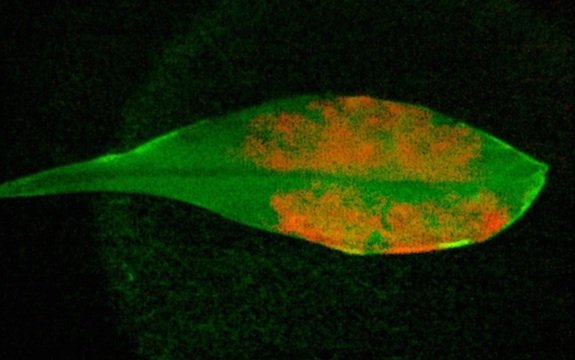Could Glowing ‘Bionic’ Plants be the Future of Street Lights?


Nanotechnology is the study and application of using miniscule particles (atoms, molecules, etc.) to manipulate matter. In the plant world, scientists have used this technology to create “bionic plants”, plants that are capable of absorbing more sunlight, and potentially making use of light wavelengths they don’t normally use. What this means for the future is anyone’s guess—stronger, bigger plants, and even plants as futuristic street lights.
A report in Nature Materials reveals scientists wanted to see how they could insert nanotubes into the “brains” of plants, their chloroplasts, that turn sunlight and CO2 into energy. They found that by simply placing a dilution of carbon nanotubes on the underside of Arabidopsis thaliana leaves, the plant would absorb them in the same manner they absorb carbon dioxide.
These absorbed nanotubes made their way into the chloroplasts unassisted. Prepared in advance to give off a glow when photosynthesis occurs, the nanotubes caused the plant to changed colors. Analyzing the reaction in the plants, the scientists were able to determine an average 30 percent increase in energy in those who received the nanotubes.
The scientists also used the nanotechnology to detect pollutants in plants, using dilutions specifically targeted to light up in the presence of nitric oxide, a pollutant produced during combustion.
Read: How We are Eating Questionable Nanotechnology
Finally, the researchers used another nanoparticle to help plants clear out free radicals, or pollutants that can damage DNA and essentially break down the survival mechanisms in plants. Treating plants with nanoceria, or nanoparticles of metallic cerium, the researchers found 27 percent fewer free radicals when compared with untreated plants.
“Plants are very attractive as a technology platform,” says Michael Strano, lead researcher. “They repair themselves, they’re environmentally stable outside, they survive in harsh environments, and they provide their own power source and water distribution.”
What does all of this research mean? The team hinted that manipulating the nanotechnology could lead to plants having mobile phone signaling power and even turn them into miniature street lamps, glowing in the dark. It also means that nanotechnology could be used to track plant pollution and help plants fight the effects of free radical damage.
